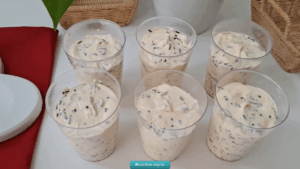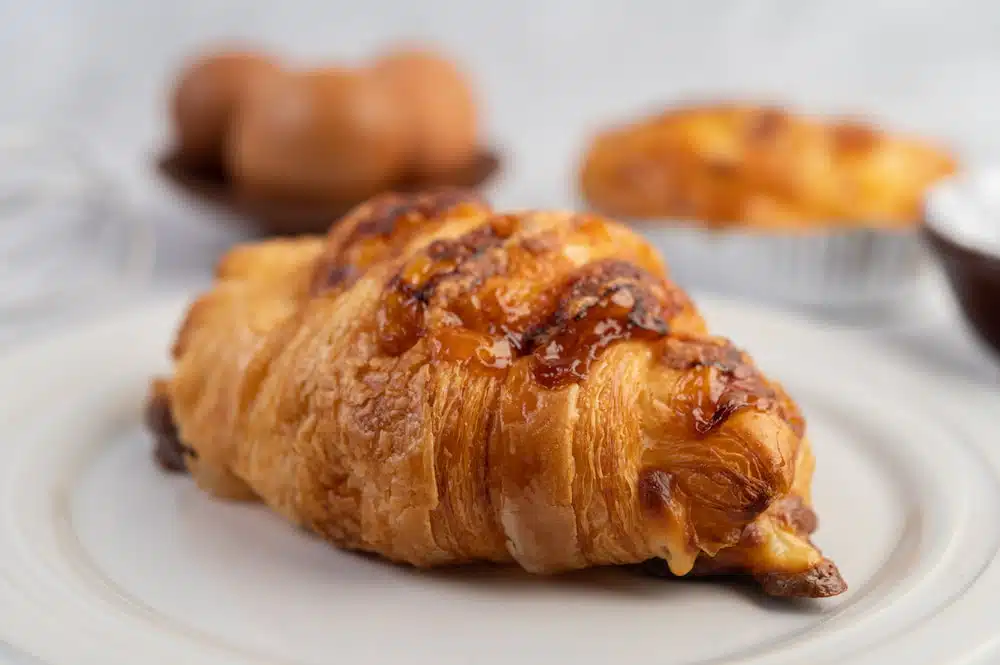
Hello everyone! Today we get fully into the fascinating world of Argentine invoices To talk about a very special: The Sacrament.
That delight puff pastry that, let’s be honest, disappears from the tray faster than we take to say “I want.”
But beyond its addictive flavor, did you know that The Sacramento invoice hides a story very particular as your name? Prepare because we are not going to give you the easier recipe to make them at homewe are also going to talk about some important points about this delight.
Do Invoices at home It may sound intimidating, but with this recipe, even the most rookie in the kitchen can achieve some spectacular homemade sacraments. Sitat that we are going to see those secrets so that they get perfect.
About the sacrament
On the invoice sacramento It is one of the most classic of the Argentine bakeries. It is a soft and airy dough, similar to that of butter medialons.
Particularly this invoice is rolled like a spiral or is presented in the form of a bow. Its texture is spongy, with a fair touch of sweetness in its filling and a tempting shine thanks to the syrup with which it brings After baking.
Es Ideal to accompany mate or coffee with milkand is usually found in assorted trays next to Vigilantes, pipes and friar balls.
Although it may or may not carry filling, there are sweet versions, such as the invoice Sacramento with quince; or the salty version, such as the Sacrament with ham and cheese.
Its simple form and its delicate taste make it an infallible classic of neighborhood bakeries.
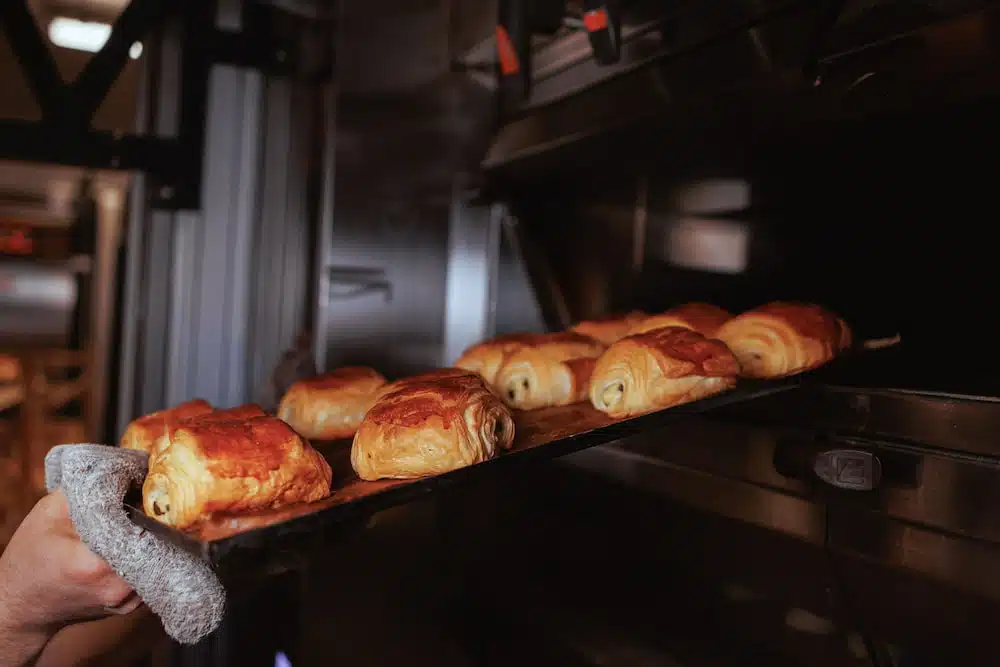
Origin, history and anarchist secret of the sacrament invoice
To understand why a sweet or salty invoice is called “Sacrament”, we have to travel in time to late nineteenth in Argentina. At that time, the bakers, many of them immigrants, did not have a good time: long days, low salaries …
These bakers decided to protest by putting names in mockery or criticism, their creations. Thus were born “vigilantes” (by the police), the “Cañoncitos” (by the army), the “Fraile balls” (in mockery of the priests), and, of course, the “Sacraments”as a direct criticism of the religious rites of the Catholic Church.
These names that are found today in the Argentine bakeries They are a sample of how creativity can bloom in the most difficult moments. And the Sacraments They are one of those “delicacies with last name” that remind us of that story every time we give them a bite.
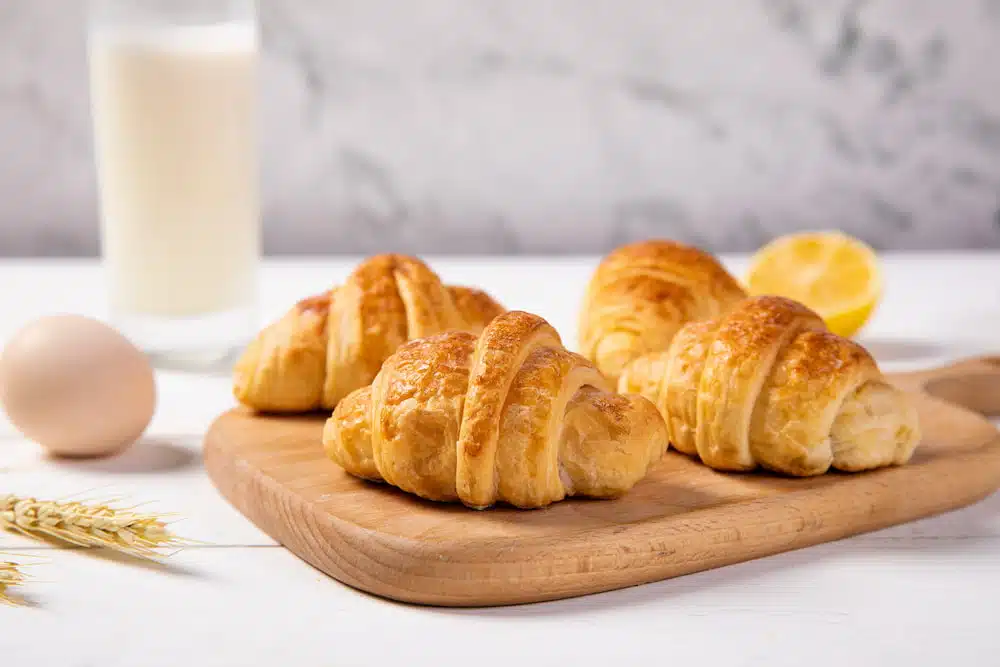

Key points: what you have to know about the Sacramento invoice
To become experts in sacraments (in addition to knowing how to do them), here I leave their main characteristics:
- Son Invoices made with a puff pastrywhat gives them that texture in such rich layers.
- Originally the Sacrament invoice could be sweet (with quince or dulce de leche) or salty (with ham and cheese). Although today Sweet versions are more popular.
- Its form is characteristic: Rolled, similar to a croissant but generally smaller and with a visible filling.
- The puff pastry is key. It is achieved with a “filling”, which is a mixture of fat (usually vaccine or margarine) and flour that is incorporated into the base dough in layers.
- Texture contrast is fundamental: tender and aerated inside, and slightly golden and crispy on the outside.


Sacraments vs. Vigilantes: Which is which?
It is usual confuse the sacraments with other invoicesespecially with the guards. But they are different.
- The guards are usually longer, straight and flattenedoften covered with quince sweet or custard. His name also has an anarchist origin, mocking the police.
- The sacraments, however, are More rolled and its filling (sweet or salty) is usually more integrated or appearing at the ends.
Sacraments without fat vaccine: Is it possible?
Yes of course! Although the traditional recipe usually carries fat for puff pastry, it can be perfectly replaced by good quality margarine (ideal if it is specific for puff pastry) or even a Mixture of butter and margarine.
The result will be a bit different in flavor and texture, but equally delicious. If you are looking for a Lighter optioncan be used butter alonebut it is important to work faster and with the dough very cold so that the puff pastry works.
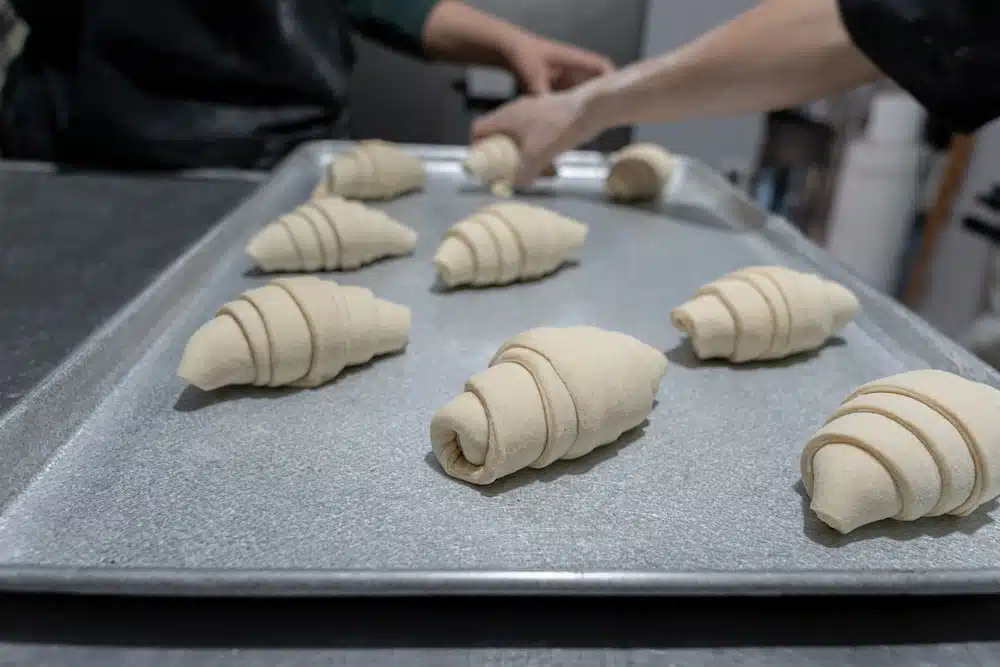

The filling of the sacrament: sweet or salty pleasure
While the Membrillo sweet filling It is an undisputed classic of the sweet sacrament, that of Dulce de Milk is also crazy! And don’t forget the salt version: ham and cheese.
The key is use a fill that does not escape too much during baking. Quince sweet is ideal for its firm consistency. For the dulce de leche it is important to use a pastry or thick.
Variations for homemade sacraments
- Sacramento invoice with quince: The classic among the classics. Use a good quince candy, cut into little strips or small cubes to be easy to roll.
- Sacraments Invoice with dulce de leche: For milk sweet lovers, this version is irresistible. Wear Dulce de Milk to keep your shape when baking.
- Sacramento Invoice with ham and cheese: The perfect salty option To accompany the mate or a chopped. Cut the ham and cheese into strips or cubes and distribute them well before rolling.
- Sacramento Invoice with custard: A thick custard filling is also a delight. It is important that the cream is very cold before using it.
- Glazed Sacraments: Once baked, they can be painted with hot syrup and sprinkle with sugar for a sweeter and brighter finish.
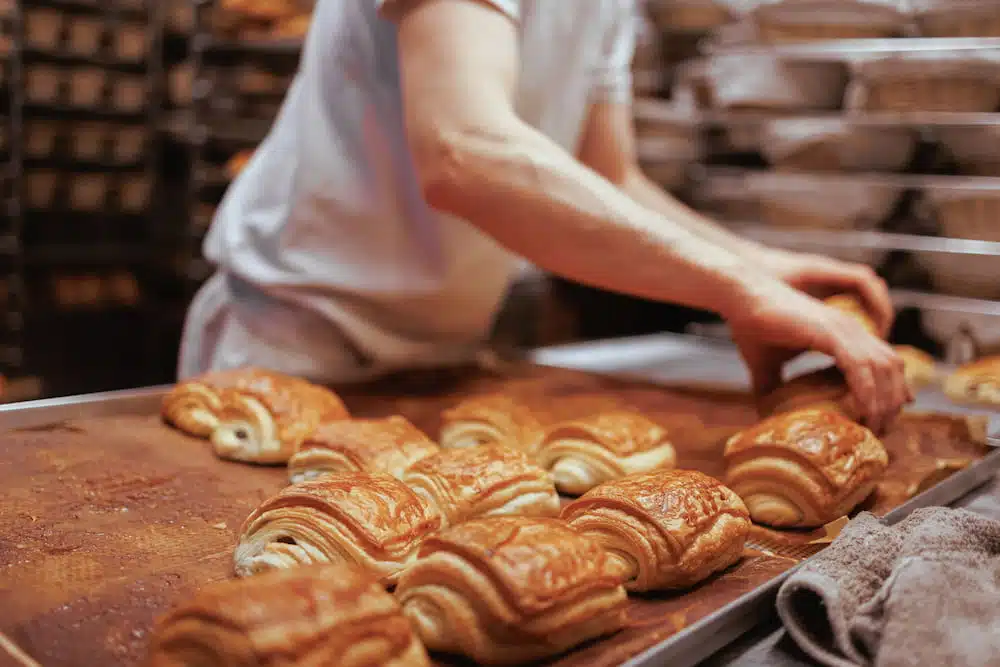

Key tips for perfect sacraments
- Ambient temperature ingredients: The ingredients have to be at room temperature (except water, which may be warm to dissolve yeast).
- The cold but malleable filling: The Fat or folk margarine must be cold But it does not last as stone, so that it can be integrated well with the flour and stretch without breaking.
- Respect rest times: Son fundamental for the dough for invoices to relaxthe puff pastry develops correctly and is easier to stretch. Don’t hurry!
- Stretch gently: Do not force the dough when stretching. If it offers resistance, let it rest a few more minutes.
- Important seal: Make sure seal the edges of the dough well After incorporating the filling so that it does not escape to the puff pastry.
- The firm but not tight rolled: By forming the sacraments, winding the dough firmly so that it does not disarm, but not so tight to prevent the puff pastry.
- The correct fermentation: Leave them levate in a warm place and without air currents until they double their size. This step is crucial for the final texture.
- Very hot oven: Los sacraments are baked at high temperature (Approx. 210 ° C) For the puff pastry to expand rapidly. Preheat well!
- Do not open the oven early: Resist the temptation to open the oven during the first minutes so that the puff pastry does not get off.
- Paint before or after baking: They can Painting with beaten egg before the oven and/or with syrup later.
Seguime on Instagram (here)
And on YouTube that I upload new recipes every week (click here)
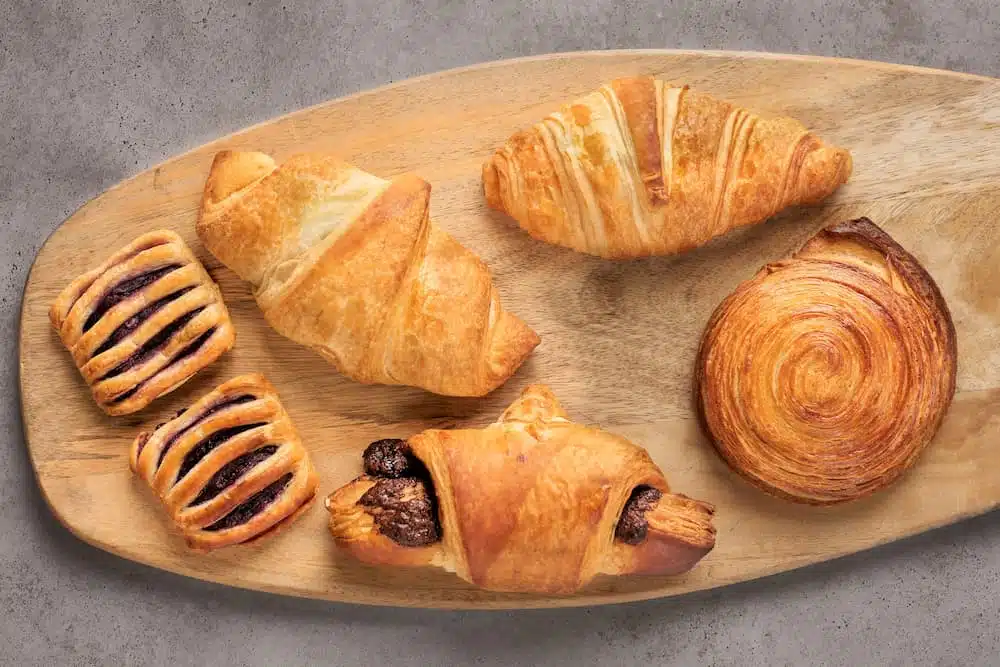

Home Sacraments Recipe
Yield: Approximately 18-20 units
Preparation time: 55 minutes (more rest times)
Ingredients for Sacraments Invoices
- 500g of Harina 000 O 0000
- 10g of fresh levadura (or 3-4g de Levadura Seca)
- 50g of sugar
- 1 cdta. of sal
- 250 ml of warm water
For the filling:
- 150g of margarine or bovine fat or butter (or mixture of margarine and butter) at room temperature but firm + 50g of flour
To paint (optional):
For filling
Dulce de Quince, Dulce de Milk, or ham and cheese at ease.
How to prepare Sacraments Step by step invoices
- To prepare the base mass dissolve yeast in warm water with a pinch of sugar in a bowl. Let stand for a few minutes until it spumes. Add the rest of the sugar, salt and flour. Integrate with a spoon or spatula and then turn to the table. Knead for about 10-15 minutesuntil obtaining a smooth and elastic mass.
- Form a bun with the dough, cover it and let rest in a warm place for about 30-45 minutesor until you double your size.
- While the dough rests, prepare the filling by mixing margarine or fat (or butter) With the flour until you get a homogeneous paste ..
- Once the base mass has doubled its size, Wear gently kneading. Stretch it on the slightly floured or oiled table, forming a rectangle of approximately 0.5 cm thick.
- Spread half of the mass rectangle with the prepared fillingleaving a free edge of approximately 1-2 cm.
- Fold half of the dough without filling over half that it does. Seal the edges well by pressing gently. Cover the dough and take the refrigerator for at least 20-30 minutes For the filling to cool and the dough relaxes.
- Remove the dough from the refrigerator. Stretch it again in a long rectangle and narrow (approximately 0.5 cm thick). Make a double fold: bring one end to the center and the other end on the first, As if it were a book. Cover with film and take the refrigerator for another 20-30 minutes.
- Repeat the stretching and fold process once or twice. Between each fold, 20-30 minutes breakdown.
- After the last rest, stretch the dough in a rectangle of about 0.3-0.4 cm thickr. Cut triangles with two long sides and one short, with a knife or cutter.
- For filling Place a little of the stuffed filling in the broad base of each triangle. Roll up from the base to the tip to form the characteristic form of sacrament.
- Place the sacraments formed on an oven plate (Enmantecada and floured, or with baking paper), leaving space between them since they will grow. Cover with a reviewer or film and let rise in a warm place for about 45-60 minutes, or until they double their size.
- Preheat the oven at 210 ° C (strong oven). You can paint the sacraments with beaten egg or gold for a bright finish. Bake 12-15 minutes, or until they are well golden and puff pastry.
- Get out of the oven and paint with hot syrup to give them brightness (optional). Let cool a little on a rack.


Source: www.paulinacocina.net


